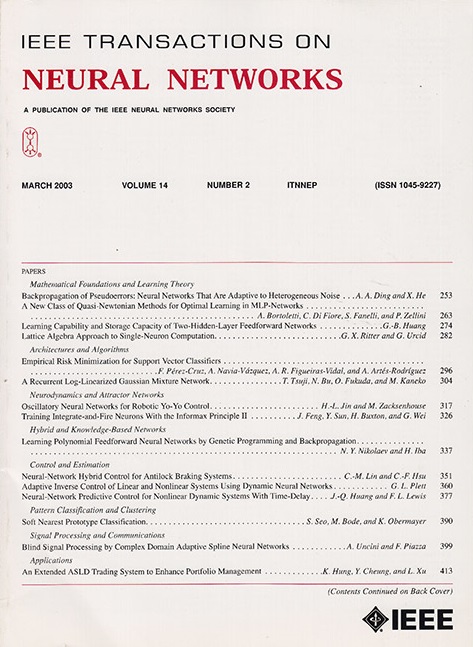A Dual-Discriminator Generative Adversarial Network for Anomaly Detection
IF 8.9
1区 计算机科学
Q1 COMPUTER SCIENCE, ARTIFICIAL INTELLIGENCE
IEEE transactions on neural networks and learning systems
Pub Date : 2025-09-05
DOI:10.1109/TNNLS.2025.3585978
引用次数: 0
Abstract
Multivariate time series anomaly detection has shown potential in various fields, such as finance, aerospace, and security. The fuzzy definition of data anomalies, the complexity of data patterns, and the scarcity of abnormal data samples pose significant challenges to anomaly detection. Researchers have extensively employed autoencoders (AEs) and generative adversarial networks (GANs) in studying time series anomaly detection methods. However, relying on reconstruction error, the AE-based anomaly detection algorithm needs more effective regularization methods, rendering it susceptible to the problem of overfitting. Meanwhile, GAN-based anomaly detection algorithms require high-quality training data, significantly impacting their practical deployment. We propose a novel GAN based on a dual-discriminator structure to address these issues. The model first processes the data with the generator to obtain the reconstruction error and then calculates pseudo-labels to divide the data into two categories. One data category is input into the first discriminator, where a minor loss between the data and its reconstructed counterpart is better. The other data category is input into the second discriminator, where a larger loss between the data and its reconstructed counterpart is better. Through this process, the model can effectively constrain the generator, retaining information on normal data during data reconstruction while discarding information on abnormal data. After conducting experiments on multiple benchmark datasets, the proposed GAN based on a dual-discriminator structure achieved good results in anomaly detection, outperforming several advanced methods. Additionally, the model also performed well in practical transformer data.一种用于异常检测的双鉴别生成对抗网络
多元时间序列异常检测在金融、航空航天、安全等领域显示出巨大的应用潜力。数据异常定义的模糊性、数据模式的复杂性以及异常数据样本的稀缺性给异常检测带来了很大的挑战。研究人员广泛使用自编码器(AEs)和生成对抗网络(gan)来研究时间序列异常检测方法。然而,基于ae的异常检测算法依赖于重构误差,需要更有效的正则化方法,容易出现过拟合问题。同时,基于gan的异常检测算法需要高质量的训练数据,这严重影响了其实际部署。我们提出了一种基于双鉴别器结构的新型GAN来解决这些问题。该模型首先使用生成器对数据进行处理,得到重构误差,然后计算伪标签,将数据分为两类。将一个数据类别输入到第一个鉴别器中,在该鉴别器中,数据与其重构的对应数据之间的损失较小会更好。另一个数据类别被输入到第二个鉴别器中,在这个鉴别器中,数据与其重构的对应数据之间的损失越大越好。通过这一过程,模型可以有效地约束生成器,在数据重构过程中保留正常数据的信息,丢弃异常数据的信息。经过在多个基准数据集上的实验,基于双鉴别器结构的GAN在异常检测方面取得了良好的效果,优于几种先进的方法。此外,该模型在实际变压器数据中也表现良好。
本文章由计算机程序翻译,如有差异,请以英文原文为准。
求助全文
约1分钟内获得全文
求助全文
来源期刊

IEEE transactions on neural networks and learning systems
COMPUTER SCIENCE, ARTIFICIAL INTELLIGENCE-COMPUTER SCIENCE, HARDWARE & ARCHITECTURE
CiteScore
23.80
自引率
9.60%
发文量
2102
审稿时长
3-8 weeks
期刊介绍:
The focus of IEEE Transactions on Neural Networks and Learning Systems is to present scholarly articles discussing the theory, design, and applications of neural networks as well as other learning systems. The journal primarily highlights technical and scientific research in this domain.
 求助内容:
求助内容: 应助结果提醒方式:
应助结果提醒方式:


